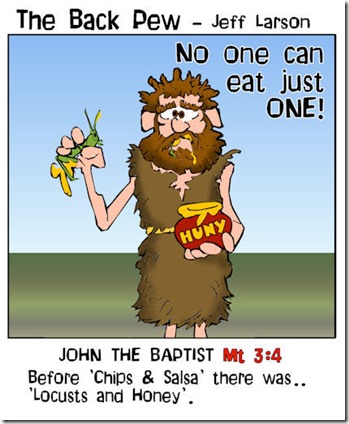 Last week I did something I never thought I would do. I came to microphone 3 at the Missouri Baptist Convention and I spoke. Not once, but twice. And, yes, I remain shocked and deeply grieved that 507 Missouri Baptists voted against our motion.
Last week I did something I never thought I would do. I came to microphone 3 at the Missouri Baptist Convention and I spoke. Not once, but twice. And, yes, I remain shocked and deeply grieved that 507 Missouri Baptists voted against our motion.
I’m deeply grieved for us, and I’m grieved for what this communicated to survivors. I really do not want to believe that 507 Missouri Baptists intended to communicate, “we don’t care about sexual abuse reform” but this is what was communicated. And I feel partially responsible. I feel as if I dropped the ball. Today I want to share why and help other states to learn from our mistakes.
Why Did the Motion Fail?
I do believe there was a bit of an unknown campaign of information prior to the meeting. And I do believe there are likely some who, for whatever reason, truly do not want sexual abuse reform. I don’t think anything we did could have changed those votes. But I believe some (maybe enough to have given us a majority) voted as they did because of a lack of information. And that’s my fault. Here is what we learned, and I’m sharing this in the hopes that other states will learn from our mistakes and hopefully we’ll see motions similar to our pass on a state level.
1. Scott Gordon’s speech before the motion should have been informational.
Honestly, we did not expect significant opposition. We had consulted with leaders within MBC, we had consulted with parliamentarians, and many others. We did not hear opposition from our leadership. There was not opposition from the committee on order of business. So we were shocked to see the vote go as it did. And because of this we weren’t prepared. Scott’s time should have been given to information. It should have been sharing why this motion was necessary and why it was different from the motion at Nashville. (That’s not to blame Scott. He did a great job. It’s to say that we didn’t have the right game plan because we didn’t read the room correctly.)
2. I was not prepared to speak for the motion.
This was a combination of ignorance and fear on my part. You don’t need to know all of my history but speaking at things like this are absolutely terrifying for me. It causes my anxiety to go through the roof. Scott was prepared—he is better at making these motions and I figured others would happily speak for the motion. But when there was nobody else to speak for it, I knew I had to go to the microphone and speak—just from the heart, completely unprepared. I didn’t do horrible, but I could have done much better.
I’m not sure if it would have swayed votes—but I would have at least done my best. Survivors didn’t get my best and for that I’m saddened. This is what I wish I would have said:
Fellow Missouri Baptists, we heard last night our executive director say that we have to “do whatever it takes” in order to rid ourselves of the scourge of sexual abuse. That is, in part, what we hope to accomplish in this motion. This is not the same as the motion in Nashville. This was patterned after the motion made in 2019 that established the racial reconciliation task force. It was intentionally not patterned after the Gaines motion. We have a bit different structure and we are at a different place in the state of Missouri. This is not a call for a third-party investigation.
One of our aims in this motion is to raise awareness and to highlight some of the really good work which Missouri Baptists have done. Passing a motion like this would give us an opportunity to get the great work of Missouri Baptist Children’s Home in front of our churches. It would help us to be more intentional about promoting things such as the Caring Well Initiative. It would help us to ask good assessment questions. And, yes, it would encourage us to ask questions of our past. How could we have done better? How can we do better in the future?
We believe that these questions needs to be asked on the local, association, state, and national level. Survivors deserve our diligence. The gospel and mission of Christ demands that we stand with the vulnerable. This is part of our mission. Let us do the right thing and ask the right questions. Let us be bold enough in Jesus to repent where needed and pursue change. And let us also believe the gospel enough to celebrate where the Spirit of God has moved in our hearts and our churches when we have done the right thing. Let us do the right thing, even now, so we can celebrate more and grieve less.
3. Messengers assumed this was the same as the motion in Nashville.
There was some language that was similar to the motion made in Nashville. That language was in regards to looking at our past. We borrowed that language because I believe we need to realize that when we are talking about sexual abuse reform we aren’t just talking about getting rid of abusers—we’re also talking about reforming all that which is complicit. That is where much of the hard work is to be done, because it is here where we experience the most significant opposition.
But this motion was not the same as the one passed in Nashville. We should have done a better job of explaining what this motion was NOT, as well as what the motion was. I don’t believe we did that—and we were shocked when the discussion ended so quickly. I think many Missouri Baptists thought it was a “liberal motion”. We weren’t able to get in front of that.
4. We didn’t show why it was necessary
I think some voted against the motion because they saw it as unnecessary. They believed that there was an investigation going on at the national level and so it would not be necessary to also have something similar on the state level.
We must make the point that reform is needed on every single level. Why? Because we are Baptists. This means that each level is autonomous. If this is the case then questions of reform need to be asked on every level. We want to make sure that in our local churches our structures are healthy for survivors of abuse as well as being clearly un-welcoming to predators. The same is true on an associational, state, and national level.
Advice For Those Yet to Meet
My advice here is simple. First, expect opposition. Expect misinformation. Expect motions like this one to be politicized and tied to a battle over liberalism and conservatism. You aren’t going to sway those giving the misinformation but you can at least labor to make sure that the room is voting against what your motion is actually hoping to accomplish. Major on information. Educate on why this is necessary for your state convention but also show why this is different than what took place in Nashville. Have multiple people prepared to speak. Know your Robert’s Rules of Order.
Looking Forward
I believe there will be some good questions asked from our executive board within the MBC. I am going to, hopefully, continue having these conversations with leadership. I think they will do some of what the motion was asking for even without a task force.
But there is some difficulty of doing this. For one, I would not support the executive board forming a task force similar to what we were calling for. The messengers spoke against this. We need to do the will of the messengers. Secondly, self-investigations never communicate well to survivors. It was far better to have an informal “task force” doing the labor. We need people from the outside to see things we aren’t seeing from within the system.
I plan on working as hard as I can on this issue in 2022. We are going to be sure we are asking these questions on the local level as well. And I hope to bring a similar motion again at the MBC in 2022. I’m hoping in the in-between time we will have many other state conventions pass motions similar to ours.
This was too important for me to not have been more prepared. Real people were harmed by our dropping the ball in some of these areas. It will not happen again.
—
Photo source: here
Like this:
Like Loading...
 I think Andy Griffith is one of the better storytellers. If you’ve got about five minutes listen to how he draws these kids in to the story of Paul Revere. And notice in particular how he draws the listener in with the way he plays with verb tenses.
I think Andy Griffith is one of the better storytellers. If you’ve got about five minutes listen to how he draws these kids in to the story of Paul Revere. And notice in particular how he draws the listener in with the way he plays with verb tenses. 

